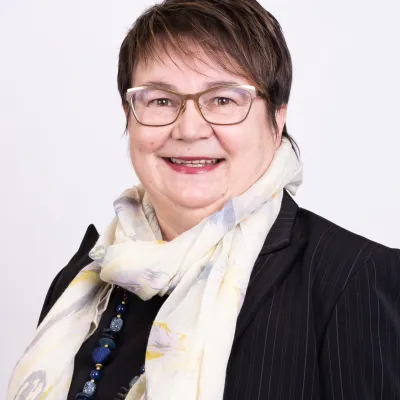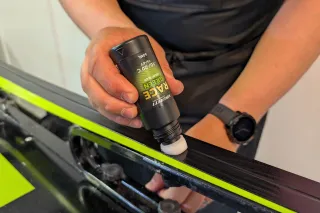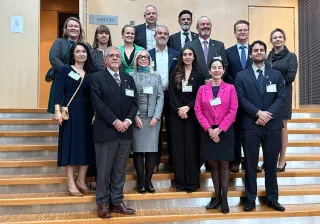It all began with an idea by Marko Parkkinen: to stop the world from drowning in plastic by replacing plastic packaging with environmentally friendly wood-based packaging. With no clue about the polymer chemistry needed to develop the product, Parkkinen soon partnered up with VTT.
- The project was born from an idea of Seedi Oy's CEO Marko Parkkinen: to replace plastic by a wood-based material. Cardboard packaging was already available, but there was no transparent alternative for plastic, says Jaakko Kaminen, who has been running Woodly Oy – originally Welmu International – since 2017.
Plastic pollution is a worldwide problem, and, according to Kaminen, the problem will only get bigger if nothing is done. Almost 300 million tonnes of plastic is produced globally every year. At the core of the problem is short-run food packaging, which keeps us dependent on fossil fuels and increase our carbon footprint.
According to Kaminen, Woodly chose wood as the basis of its new, more environmentally friendly packaging material, because Finland's forests have an ample supply of it.
- Forests also act as carbon sinks, and well-maintained forests are an important renewable natural resource, he explains.
The company's cooperation with VTT began in 2011 after a long planning process.
- We chose VTT because we wanted a research partner that excels in the kind of creative product development that we had been engaged in for years.
According to Kaminen, cooperation with VTT has been smooth since the beginning despite the different backgrounds of business people on the one hand and chemists and researchers on the other.
- We have taken it one project at a time. The results have proven that the partnership is worth continuing. Excellent communication has always been one of the strengths of our partnership. We have overcome challenges together, and it really does not feel like Tommi Vuorinen and the rest of the project team at VTT work in a different company at all. We have always pursued a common goal – as a team, Kaminen says.
Like Kaminen, VTT's Senior Scientist Tommi Vuorinen joined the project team a couple of years ago and has since then been closely involved in the development of Woodly.
- Our strategic product development partnership relies on complete trust between everyone involved. Good communication has helped everyone to stay up to date on where we are in the product development process, Vuorinen says.
A change of direction towards bigger markets
Woodly is a clear cellulose-based material similar to traditional oil-based plastic. It can be used to make a wide range of packaging solutions that imitate the best properties of plastic. This has not always been the case, however. The original idea was to produce a substitute for cling film, and the wider possibilities of the product were only discovered as the development process progressed.
- The transition from cling film to a material that can be used as a substitute for all kinds of fossil-fuel plastic food packaging was a big step. Trial and error have made the product what it is today, Kaminen says.
According to Kaminen, the product development process is still not complete, but cooperation with brands has already begun. Last year, the company announced a partnership with Famifarm Oy, which sells potted lettuce and herbs under the brand name Järvikylä.
- Potted basil plants wrapped in a film that is not made of traditional oil-based plastic could be in shops before the end of the year.
- We have also engaged in collaboration and testing with other brands and will be publishing more information about these partnerships in the near future, Kaminen says.
According to Kaminen, Woodly is very much on-trend as a product, as it promotes a move away from fossil fuels and a throw-away society. Woodly won the 2018 New Wood competition, which seeks wood-based solutions to global sustainability challenges.
According to Kaminen, the company is currently working on three different production lines. One will produce films that can be used instead of traditional cling film to package, for example, Järvikylä's products. The second will produce injection-moulded products, such as bottles and boxes, and the third will make cardboard and paper sleeves for ready meals, for example.
One of the benefits of Woodly is that it can be produced using the same machinery as traditional plastic. No major investments or modifications to production processes are needed.
- We did not want to build infrastructure that would compete with the plastics industry but to work in collaboration with plastic producers. It could be the plastics industry that finds the solution to the world's plastic pollution problem – after all, plastic producers have a century of experience of the material, a global infrastructure in place and a massive reputation crisis to overcome.
- We want to launch the product before the end of the year. Until we do, we are simply experimenting, and there is always a risk with product development, Kaminen says, although he immediately adds that a launch this year looks promising.
- We have already left the laboratory behind and started working on the product with industrial-scale plastic producers. However, we will only be able to supply the product on a commercial basis once the production process works perfectly, the line speeds have been optimised, waste has been minimised and the material is of a consistent quality.







